2,6-DICHLORO-N-HYDROXYBENZENECARBOXIMIDOYL CHLORIDE
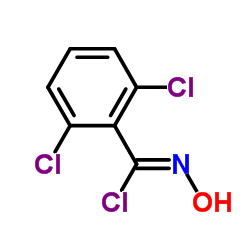
2,6-DICHLORO-N-HYDROXYBENZENECARBOXIMIDOYL CHLORIDE structure
|
Common Name | 2,6-DICHLORO-N-HYDROXYBENZENECARBOXIMIDOYL CHLORIDE | ||
|---|---|---|---|---|
| CAS Number | 6579-27-7 | Molecular Weight | 224.472 | |
| Density | 1.5±0.1 g/cm3 | Boiling Point | 349.2±52.0 °C at 760 mmHg | |
| Molecular Formula | C7H4Cl3NO | Melting Point | 85ºC | |
| MSDS | N/A | Flash Point | 165.0±30.7 °C | |
| Name | 2,6-dichloro-n-hydroxybenzenecarboximidoyl chloride |
|---|---|
| Synonym | More Synonyms |
| Density | 1.5±0.1 g/cm3 |
|---|---|
| Boiling Point | 349.2±52.0 °C at 760 mmHg |
| Melting Point | 85ºC |
| Molecular Formula | C7H4Cl3NO |
| Molecular Weight | 224.472 |
| Flash Point | 165.0±30.7 °C |
| Exact Mass | 222.935852 |
| PSA | 32.59000 |
| LogP | 3.03 |
| Vapour Pressure | 0.0±0.8 mmHg at 25°C |
| Index of Refraction | 1.597 |
Synonym:None know Section 2 - COMPOSITION, INFORMATION ON INGREDIENTS
Risk Phrases: 20/21/22 34 Section 3 - HAZARDS IDENTIFICATION EMERGENCY OVERVIEW
Harmful by inhalation, in contact with skin and if swallowed. Causes burns. Potential Health Effects Eye: Causes eye burns. Skin: Harmful if absorbed through the skin. Causes skin burns. Ingestion: Harmful if swallowed. Causes gastrointestinal tract burns. Inhalation: Harmful if inhaled. Causes chemical burns to the respiratory tract. Chronic: No information found. Section 4 - FIRST AID MEASURES Eyes: Immediately flush eyes with plenty of water for at least 15 minutes, occasionally lifting the upper and lower eyelids. Get medical aid immediately. Skin: Get medical aid immediately. Immediately flush skin with plenty of water for at least 15 minutes while removing contaminated clothing and shoes. Ingestion: Get medical aid immediately. Do NOT induce vomiting. If conscious and alert, rinse mouth and drink 2-4 cupfuls of milk or water. Inhalation: Get medical aid immediately. Remove from exposure and move to fresh air immediately. If not breathing, give artificial respiration. If breathing is difficult, give oxygen. Notes to Physician: Treat symptomatically and supportively. Section 5 - FIRE FIGHTING MEASURES General Information: As in any fire, wear a self-contained breathing apparatus in pressure-demand, MSHA/NIOSH (approved or equivalent), and full protective gear. Extinguishing Media: Use foam, dry chemical, or carbon dioxide. Section 6 - ACCIDENTAL RELEASE MEASURES General Information: Use proper personal protective equipment as indicated in Section 8. Spills/Leaks: Vacuum or sweep up material and place into a suitable disposal container. Avoid generating dusty conditions. Section 7 - HANDLING and STORAGE Handling: Minimize dust generation and accumulation. Do not breathe dust, vapor, mist, or gas. Do not get in eyes, on skin, or on clothing. Use only in a chemical fume hood. Storage: Store in a cool, dry place. Store in a tightly closed container. Corrosives area. Section 8 - EXPOSURE CONTROLS, PERSONAL PROTECTION Engineering Controls: Facilities storing or utilizing this material should be equipped with an eyewash facility and a safety shower. Use adequate ventilation to keep airborne concentrations low. Exposure Limits CAS# 6579-27-7: Personal Protective Equipment Eyes: Wear appropriate protective eyeglasses or chemical safety goggles as described by OSHA's eye and face protection regulations in 29 CFR 1910.133 or European Standard EN166. Skin: Wear appropriate protective gloves to prevent skin exposure. Clothing: Wear appropriate protective clothing to prevent skin exposure. Respirators: Follow the OSHA respirator regulations found in 29 CFR 1910.134 or European Standard EN 149. Use a NIOSH/MSHA or European Standard EN 149 approved respirator if exposure limits are exceeded or if irritation or other symptoms are experienced. Section 9 - PHYSICAL AND CHEMICAL PROPERTIES Physical State: Crystalline powder Color: White Odor: Not available. pH: Not available. Vapor Pressure: Not available. Viscosity: Not available. Boiling Point: Not available. Freezing/Melting Point: 84 - 87 deg C Autoignition Temperature: Not available. Flash Point: Not available. Explosion Limits, lower: Not available. Explosion Limits, upper: Not available. Decomposition Temperature: Solubility in water: Specific Gravity/Density: Molecular Formula: C7H4Cl3NO Molecular Weight: 224.48 Section 10 - STABILITY AND REACTIVITY Chemical Stability: Stable under normal temperatures and pressures. Conditions to Avoid: Incompatible materials. Incompatibilities with Other Materials: Water, strong oxidizing agents, reducing agents, strong bases, amines. Hazardous Decomposition Products: Hydrogen chloride, hydrogen cyanide, carbon monoxide, oxides of nitrogen, carbon dioxide. Hazardous Polymerization: Has not been reported Section 11 - TOXICOLOGICAL INFORMATION RTECS#: CAS# 6579-27-7 unlisted. LD50/LC50: Not available. Carcinogenicity: 2,6-Dichloro-n-hydroxybenzenecarboximidoyl chloride - Not listed by ACGIH, IARC, or NTP. Section 12 - ECOLOGICAL INFORMATION Section 13 - DISPOSAL CONSIDERATIONS Dispose of in a manner consistent with federal, state, and local regulations. Section 14 - TRANSPORT INFORMATION IATA Shipping Name: CORROSIVE SOLID, TOXIC, N.O.S. Hazard Class: 8 (6.1) UN Number: 2923 Packing Group: III IMO Shipping Name: CORROSIVE SOLID, TOXIC, N.O.S. Hazard Class: 8 (6.1) UN Number: 2923 Packing Group: III RID/ADR Shipping Name: CORROSIVE SOLID, TOXIC, N.O.S. Hazard Class: 8 (6.1) UN Number: 2923 Packing group: III Section 15 - REGULATORY INFORMATION European/International Regulations European Labeling in Accordance with EC Directives Hazard Symbols: C Risk Phrases: R 20/21/22 Harmful by inhalation, in contact with skin and if swallowed. R 34 Causes burns. Safety Phrases: S 22 Do not breathe dust. S 26 In case of contact with eyes, rinse immediately with plenty of water and seek medical advice. S 36/37/39 Wear suitable protective clothing, gloves and eye/face protection. S 45 In case of accident or if you feel unwell, seek medical advice immediately (show the label where possible). WGK (Water Danger/Protection) CAS# 6579-27-7: No information available. Canada None of the chemicals in this product are listed on the DSL/NDSL list. CAS# 6579-27-7 is not listed on Canada's Ingredient Disclosure List. US FEDERAL TSCA CAS# 6579-27-7 is not listed on the TSCA inventory. It is for research and development use only. SECTION 16 - ADDITIONAL INFORMATION N/A |
| Hazard Codes | C: Corrosive; |
|---|---|
| HS Code | 2925290090 |
|
~77% 
2,6-DICHLORO-N-... CAS#:6579-27-7 |
| Literature: Phenex Pharmaceuticals AG Patent: EP2289883 A1, 2011 ; Location in patent: Page/Page column 12; 16 ; EP 2289883 A1 |
|
~% 
2,6-DICHLORO-N-... CAS#:6579-27-7 |
| Literature: WO2005/82898 A1, ; Page/Page column 61 ; |
|
~% 
2,6-DICHLORO-N-... CAS#:6579-27-7 |
| Literature: US2003/165561 A1, ; |
|
~% 
2,6-DICHLORO-N-... CAS#:6579-27-7 |
| Literature: WO2004/99165 A2, ; Page 6/84 ; |
| Precursor 4 | |
|---|---|
| DownStream 10 | |
| HS Code | 2925290090 |
|---|---|
| Summary | 2925290090 other imines and their derivatives; salts thereof。Supervision conditions:None。VAT:17.0%。Tax rebate rate:9.0%。MFN tariff:6.5%。General tariff:30.0% |
| 2,6-Dichloro-N-hydroxybenzenecarboximidoyl chloride |
| 2,6-Dichlorobenzohydroximoyl chloride |
| 2,6-Dichloro-n-hydroxybenzenecarboximidoyl chlorid |
| 2,6-dichlorophenylhydroxamoyl chloride |
| 2,6-Dichlorobenzohydroxamoyl chloride |
| 2,6-dichlorobenzohydroximinoyl chloride |
| 2,6-dichlorophenylhydroximic chloride |
| 2,6-DICHLORO-N-HYDROXYBENZENECARBOXIMIDOYL CHLOR |
| (Z)-2,6-dichloro-N-hydroxybenziMidoyl chloride |
| 2,6-Dichlorobenzenehydroximic acid chloride |
| Benzenecarboximidoyl chloride, 2,6-dichloro-N-hydroxy- |
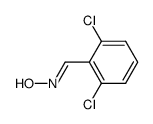

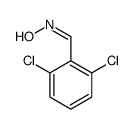

 CAS#:4402-83-9
CAS#:4402-83-9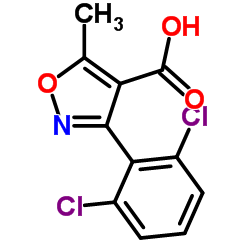 CAS#:3919-76-4
CAS#:3919-76-4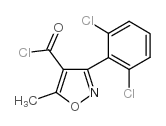 CAS#:4462-55-9
CAS#:4462-55-9 CAS#:2904-62-3
CAS#:2904-62-3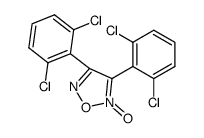 CAS#:6662-50-6
CAS#:6662-50-6 CAS#:24248-21-3
CAS#:24248-21-3 CAS#:278597-28-7
CAS#:278597-28-7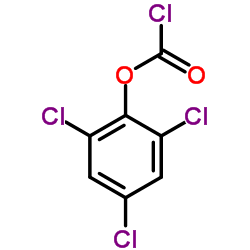 CAS#:278597-30-1
CAS#:278597-30-1 CAS#:6590-95-0
CAS#:6590-95-0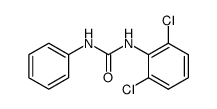 CAS#:63105-17-9
CAS#:63105-17-9